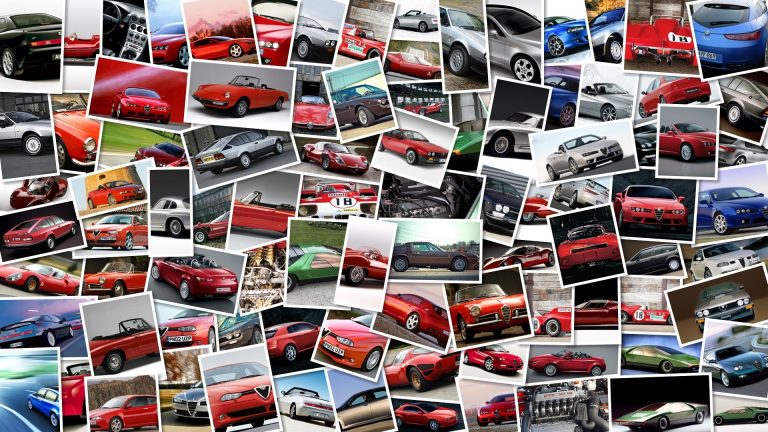
Fausto Gresini was a former two-time 125cc World Champion (1985-1987) before retiring in 1994 and becoming a team owner and manager and his sucessful satellite teams have been the most sought out in GP racing.
Gresini has been a mentor to several riders that have passed through his teams and some can also thank him for not only for being a team manager also being a generous father figure.
Gresini won his first world championship as a team manager with Daijiro Kato in the 250cc class in before the Japanese rider’s tragic death at Suzuka in 2003 and keeping the memory alive of #74 has been a mission for the Italian manager who has helped organize for the past five years the DediKato event at Misano.
He’s revived lagging careers like Marco Melandri’s who was the 2005 MotoGP runner-up, after two seasons of continuous injuries.
Melandri often turned to Gresini for support during his disastrous 2008 season with Ducati and in 2009 the Italian manager once again hired him.
He also kept Toni Elias at the end of opaque 2009 season, but had him switch to his debuting Moto2 team and they won the inaugural Moto2 title in 2010.
Here’s a very interesting Q&A press release by Honda following the Gresini MotoGP, CRT and Moto3 team presentation at the Polytechnic University of Milan on Tuesday.
Kudos to Honda’s press office because not only is the interview a great read, it also offers some insight on the man who seemed almost ready to quit everything after the loss of Marco Simoncelli, but has found the strength to continue and the interview touches several bases, from CRTs to Alvaro Bautista and more.
Fausto Gresini is the most successful team owner in the history of MotoGP racing.
His story as a team owner begins three years after the two-time 125cc World Champion retired from racing in 1994.
It was then that he made the transition, focusing the drive and ambition that he displayed as a rider on team ownership.
At the start, the Italian worked with veterans-Alex Barros and Loris Capirossi-but it is his work mentoring young riders where he has had some of his greatest impact.
In 2001, his fifth year as a team owner, Gresini won his first World championship with Daijiro Kato in the 250cc class.
But the rising and likeable Japanese star would not be given time to show his true potential; his career and life were cut short as a result of injuries suffered in a crash in the 2003 Japanese Grand Prix at Suzuka.
Nine years later, Kato remains a strong presence within Gresini Racing; his 2001 title-winning Honda NSR250 and his 2003 Honda RC211V sit in the conference room of the team’s race shop in San Clemente, near Riccione, Italy.
The loss of Kato was devastating both for the team and Gresini.
But they regrouped and continued.
Spaniard Sete Gibernau won four races and finished second in the 2003 MotoGP World Championship.
Gibernau won four more races the next year, again finishing second.
In 2005, his first year with the team, Marco Melandri won two more MotoGP races, sending the team to its third consecutive MotoGP runner-up finish.
Melandri added three more wins in 2006, with team-mate Toni Elias taking the victory at the Portuguese Grand Prix in Estoril.
Elias’s win aboard the Gresini Honda was the last time a non-factory motorcycle won a MotoGP race.
That win gave Gresini Racing 14 MotoGP wins, by far the most of any satellite team.
Elias was with the team in 2009 when he was asked to spearhead their entry in the new Moto2 class for the following year.
Riding the Gresini Racing Moriwaki Honda, the Spaniard won seven races and the inaugural Moto2 World Championship.
Marco Simoncelli joined the team in 2010 as a team-mate to Marco Melandri.
Simoncelli showed signs of brilliance, but also inconsistency.
It was in 2011 that he came into his own, taking his first pole position in Catalunya and first podium in Brno.
His best weekend came in Australia, where he qualified third and finished second.
But the joy wouldn’t be lasting.
The following weekend Simoncelli lost his life in a racing accident on the second lap of the Malaysian Grand Prix at Sepang.
The days, weeks, and months that followed have not been easy for anyone on the team, nor was the task of replacing the charismatic and talented Italian.
But rather than shy away from the challenge, Gresini is now embarking on one of the most ambitious racing programs in grand prix history.
In 2012, Gresini Racing will contest the Moto3 World Championship, with Niccolo Antonelli; Moto2, with Gino Rea; and MotoGP, with Alvaro Bautista.
Then there’s the added twist of entering a CRT machine – a Honda CBR1000RR engine built by Ten Kate Racing housed in a bespoke British-made FTR chassis-in the MotoGP class, with Michele Pirro.
Gresini spoke about the past and future during an interview in the team’s offices in an industrial park in Faenza, Italy, about 50Km southeast of Bologna and roughly an hour from the team’s shop in San Clemente.
Gresini, smartly dressed in dark blue Stone Island sweater over a crisp blue and white striped oxford cloth shirt, and distressed jeans, began by apologizing for his passable English.
When he occasionally spoke in Italian, it was translated by a Gresini Racing employee who spoke fluent English.
Why did you become a team owner in 1997?My career as a rider was finished and I decided I still had more love for the bike and decided to start a new process.
It’s better to be a young team owner instead of an old rider.
This is my style.
For me it’s important to continue with motorcycles.
Me, I love too much the bike to not continue in this way.
How difficult was it to adjust to being a team owner, rather than a rider?I started my new career as a team owner working with Honda Brazil.
I started with Alex Barros.
I started with the top class.
It’s very difficult.
And to have a good rider like Alex and to have my history in Italy and to have a sponsor with my new history, this makes it possible to start.
But it’s clear for me everything is new.
It’s completely different compared to riding.
And it’s a new way to work.
There are many people working with me.
It was like I was building a company.
It was completely different.
It was difficult.
It’s necessary to take time to understand this new system of working; this is important to consider as a whole.
As a rider, it’s important to have physical preparation and a good mental approach.
As a team owner, it’s a completely different approach.
It’s all day working with mechanics’ problems, bike problems; many, many parts.
This year Gresini Racing is in all three classes and CRT.
This season we have Moto3 as a completely new bike and CRT as a completely new bike.
This is a big problem.
For now, for Moto3 we don’t have a kit.
It’s in development and it’s not finished and we don’t have the parts.
The CRT, it was late in February that we assembled the new bike, the first bike.
This is complicated.
It’s clear the new project is important to start.
My race team group is 15 people and this is an important group.
We have the same structure for the workshop, the same hospitality.
This decreases the cost.
For me it’s an important strategy, a strategy to have every category.
It’s important to have a good project to improve the riders.
We have a project with Honda Italy to school young riders from 9 to 13 years on the Honda NSF 100 and this championship is very important to improve young Italian riders for the future.
For this reason we started Moto3.
And in Moto3 we have San Carlo as a sponsor.
You won two world championships in the 125cc class, but now it seems there are not as many good, young Italian riders.
I think now the teams and federation don’t invest too much in the young riders.
In the next two or three years, the Italian Federation is investing and things will change.
My team and Honda Italy has invested in young riders.
And now it looks like we’ve got new, possibly good riders and this is a new process.
We just started this new process; it’s necessary that it’s going to take five years, that’s clear.
At one time, everyone was not working with young riders.
We have riders like (Loris) Capirossi, Valentino (Rossi), Marco (Simoncelli), (Marco) Melandri and many good riders.
For me this is a mistake.
Now the federation has a team, it’s Ioda Team Italia.
This is important.
And Honda Italy invests a lot of money to develop young riders.
Why did you choose Alvaro Bautista?It’s clear the story is strange.
It’s clear when we finished Marco’s (Simoncelli) story we didn’t have another way.
In that case, Dovi (Andrea Dovizioso) had signed before with Tech3.
For me in that moment, it’s not important to have an Italian rider.
I prefer not to.
For me the feeling is no good and I prefer to change the nationality and this is the reason.
My mentality is no good to continue with an Italian rider on the same bike as Marco.
It’s necessary to take some time, a little more distance with the Spanish rider.
All the time I’m working with bikes there’s much love for (motorcycles).
Now it’s difficult, it’s different.
Marco’s death, it changed many things.
Now, in that moment, for me it’s no good now.
It’s not a big love anymore.
The work, I still love it, but to go to the circuit I don’t really feel like it.
This is my feeling at the moment.
I think it will be necessarily a long process.
Have you always been close to your riders?Yes, it’s a mentality for my team, it’s necessary.
It’s family, for sure.
It’s family and it’s an important relationship and we’re working day by day talking to the riders.
And Marco was a very special man.
And this is the other important point.
Very, very sensible and very easy to work with.
He’s a lovely guy.
Why did you build a CRT machine?It’s clear MotoGP has many problems for four years, five years and every year it’s too difficult, the financial end of it is too difficult.
There is no money and every year the cost of the bike increases and the cost of the rider.
And every year the number of MotoGP riders decreases.
This is clear.
For Dorna it’s an emergency.
It’s necessary because it’s clear the manufacturers are not working to increase the number of riders and in that case for Dorna it’s necessary to work in another different way.
If not, for sure MotoGP is finished.
We need a big change.
And the reason is to decrease the cost and invest in new and young riders.
This is a process.
The manufacturers, for me, don’t have a good focus on the problem.
It’s not a problem for the manufacturers, but for Dorna.
It’s clear now that it’s difficult in the financial World.
And it’s clear they have to decrease the cost.
The manufacturers decrease the cost, the budget for racing, but they didn’t decrease the cost of the bike.
Why? This is the problem.
It’s clear in this situation, for the teams it’s impossible to continue.
Sure, CRT represents a new story.
I don’t know if it’s good or not.
It’s clear now it’s not a competitive bike, but for me now it’s necessary to have a complete grid, to have riders, to have the possibility to start in this new story.
Would you have preferred to continue with two prototypes?I prefer to continue this year with two prototypes, but I don’t have a way.
And so I changed my way.
It’s clear it’s necessary.
For the manufacturers, Dorna, and the FIM, they realise the new system is a good combination.
For the manufacturers, for the teams it’s important they have a chance to continue.
And for three or four years it’s been too difficult to continue with the show.
Everybody made sacrifices, tried to cut the costs here and there.
For sure, we couldn’t continue like that.
We wouldn’t have had any possibility to continue.
For sure it was the end of the championship.
There was no possibility for me to continue with this team, at least.
For this cost it’s impossible.
You also made the choice to switch from Ohlins to Showa suspension.
For me, Showa is a good company.
We had a ten year working relationship with Showa and have good memories of Showa, winning races on very competitive material.
All the teams have Ohlins…and for me, it’s important that Showa represents only one team, and we’re their top team and they’re working with us.
This is our strategy for my team.
And sure, Showa has more motivation to re-enter in MotoGP.
And my team gives Showa the key to enter MotoGP; a good bike and a good rider.
It’s a positive point.
But it could be difficult for Alvaro Bautista to do all the development.
We signed an agreement with Showa for Moto3, Moto2, CRT and MotoGP, so the whole family is Showa.
I think it shows that they want to start anew.
This is the positive point.
They have the interest to stay in all categories.
The strategy for Showa in the long term is to have more riders, I think.
But we’re very happy to start with Showa.
You seem to have a very good relationship with your sponsor, San Carlo, the Milan-based multinational snack food company.
The basis of San Carlo is the love of the bike.
This is very important for the president, Alberto Vitaloni.
We’re working with this company for seven years; for 2012 it’s the fifth year as my main sponsor.
And we have a good connection with this company.
It’s a leader for chips in Italy.
And they have distributors in Spain, France, Germany, Belgium, Holland, Switzerland, and many other countries.
Africa.
Two years ago they started selling in Qatar.
And it’s a big company.
For me it’s so important.
I have many sponsors that have continued with me for many years, San Carlo, Castrol (oils and lubricants), Agos (consumer finance services); this is the story for my team.
It’s important to have a relationship and a connection with a sponsor.

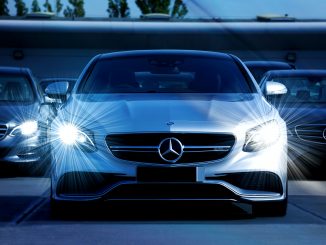
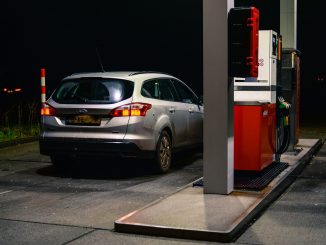
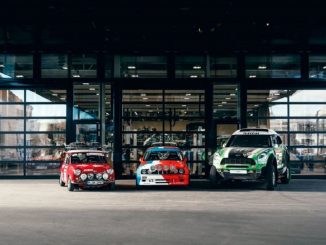
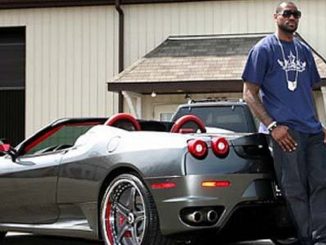
Leave a Reply